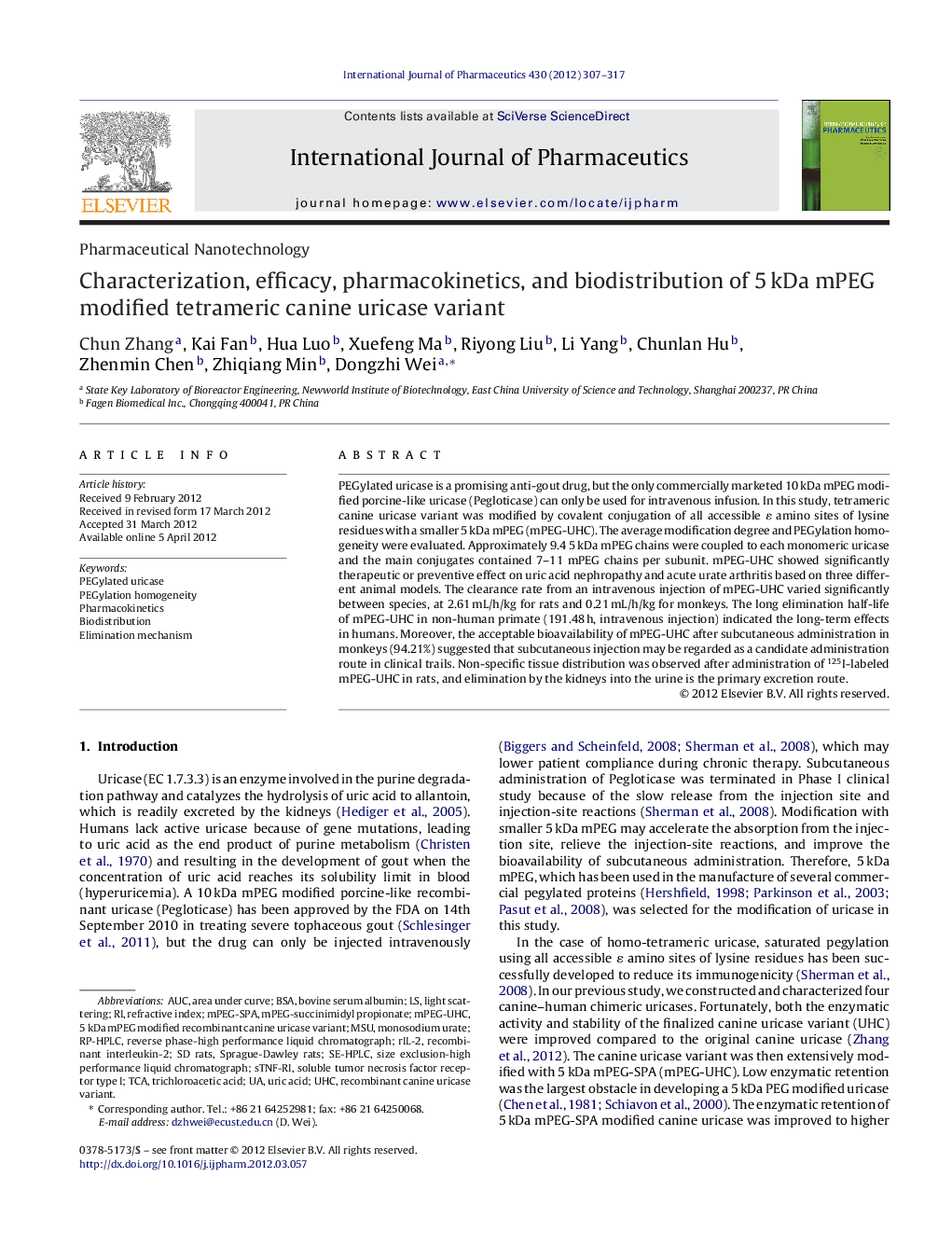| Article ID | Journal | Published Year | Pages | File Type |
|---|---|---|---|---|
| 2502823 | International Journal of Pharmaceutics | 2012 | 11 Pages |
PEGylated uricase is a promising anti-gout drug, but the only commercially marketed 10 kDa mPEG modified porcine-like uricase (Pegloticase) can only be used for intravenous infusion. In this study, tetrameric canine uricase variant was modified by covalent conjugation of all accessible ɛ amino sites of lysine residues with a smaller 5 kDa mPEG (mPEG-UHC). The average modification degree and PEGylation homogeneity were evaluated. Approximately 9.4 5 kDa mPEG chains were coupled to each monomeric uricase and the main conjugates contained 7–11 mPEG chains per subunit. mPEG-UHC showed significantly therapeutic or preventive effect on uric acid nephropathy and acute urate arthritis based on three different animal models. The clearance rate from an intravenous injection of mPEG-UHC varied significantly between species, at 2.61 mL/h/kg for rats and 0.21 mL/h/kg for monkeys. The long elimination half-life of mPEG-UHC in non-human primate (191.48 h, intravenous injection) indicated the long-term effects in humans. Moreover, the acceptable bioavailability of mPEG-UHC after subcutaneous administration in monkeys (94.21%) suggested that subcutaneous injection may be regarded as a candidate administration route in clinical trails. Non-specific tissue distribution was observed after administration of 125I-labeled mPEG-UHC in rats, and elimination by the kidneys into the urine is the primary excretion route.
Graphical abstractFigure optionsDownload full-size imageDownload high-quality image (140 K)Download as PowerPoint slide
